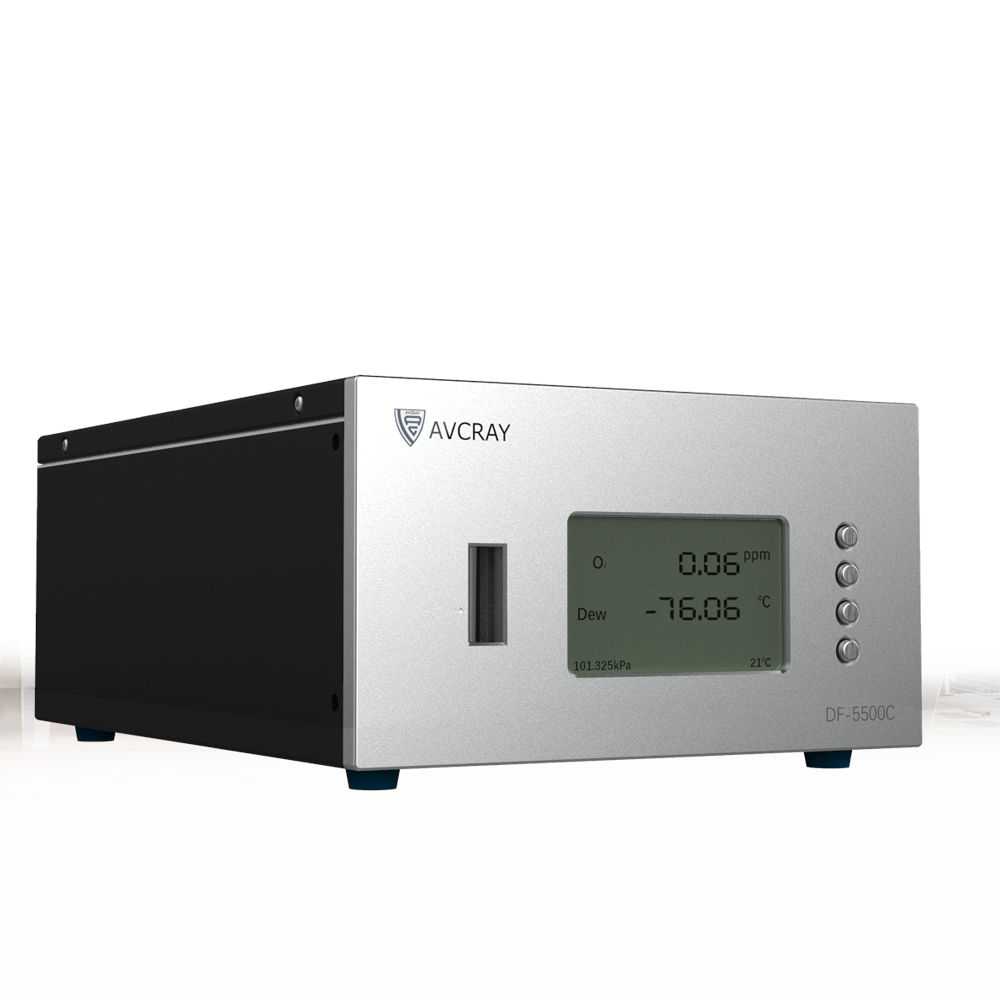- Magnetic oxygen analyzer and magnetic mechanical oxygen analyzer
(1) Detection principle of thermomagnetic oxygen analyzer. The detector is placed in a constant temperature chamber higher than the ambient temperature. The detector is equipped with a constant magnetic field. When the sample gas to be detected flows through the detection chamber of the detector, the magnetic field draws oxygen with high magnetic susceptibility into the detection chamber for detection. The detection element in the detection chamber is generally a platinum wire. There is a constant heating current on the platinum wire. Oxygen enters the detection chamber to be heated on the platinum wire. The magnetic susceptibility decreases rapidly, and then the newly entered oxygen pushes out the detection chamber. The oxygen content in the sample gas is different, the amount of oxygen entering/exiting the platinum wire in the detection chamber is different, and the heat taken away from the platinum wire is also different.* Finally, the resistance value on the platinum wire changes, and the resistance value of the platinum wire resistor is detected. It can indirectly measure the oxygen content in the gas.
(2) Detection principle of magnetic mechanical oxygen analyzer. The detector/magnet assembly is placed in the constant temperature chamber of the instrument higher than the ambient temperature. In the detector, there is a pair of hollow glass test bodies filled with nitrogen, which are suspended on a platinum nickel alloy ribbon in an uneven magnetic field. Due to the “magnetic levitation” effect, The two balls of the test body are subjected to a deflection force to generate a deflection moment, and this eccentric moment is proportional to the volume magnetic susceptibility of the gas surrounding the test body. It is directly proportional to the oxygen content in the measured gas. The basic principles of these two types of instruments are based on the paramagnetism of oxygen. They are not suitable for measuring the background gas containing high magnetic susceptibility gas (such as NO, NO2). However, this type of oxygen analyzer has fast response speed, good stability, and does not consume the measured gas.

- Electrochemical oxygen analyzer
The electrochemical oxygen analyzer performs measurement based on the electrochemical reaction between oxygen and the sensor cathode. Its sensor is an electrolytic cell, and the applied direct current is added between the cathode and anode of the electrolytic cell. The electrolytic cell is filled with electrolyte, and the sample gas reaches the cathode through the diffusion plate or semi-permeable membrane, and is reduced by electrolysis reaction at the cathode. , Generate the corresponding current, the size of the current is proportional to the concentration of oxygen in the sample gas. This type of instrument has a wide range of applications. Depending on the structure, it can measure the oxygen content of the gas or the oxygen content of the dissolved oxygen in the solution. The disadvantages are: the narrow temperature range of the sensor working place, the pressure cannot be high, and the short life span of the sensor. In addition, since the electrolyte is constantly being consumed, the stability of the instrument is poor and the drift is too large.
- Zirconia oxygen analyzer
The detection principle of the zirconia analyzer is the oxygen concentration difference battery. After adding certain additives to the zirconia material, it becomes a solid electrolyte of oxygen ions at a certain temperature through high temperature sintering, and firing platinum electrodes on the inside and outside of the element becomes a zirconia oxygen sensor. At a certain temperature, there is a concentration difference potential between the inner and outer electrodes that changes with the difference in oxygen concentration on both sides. When the oxygen concentration on the side of the reference electrode is fixed (usually air is used as the reference gas, the oxygen content in the air is 20.95%), the concentration potential changes only with the change of the oxygen concentration on the measurement side. The biggest advantage of the zirconia oxygen analyzer lies in its stable operation and low maintenance. The disadvantage is that the temperature of the process sample gas suddenly becomes cold, or the zirconium tube easily bursts when it contains water vapor. In addition, if the measured gas contains reducing gases such as H2 and CO at high temperatures, a reduction reaction will occur and consume O2, resulting in a lower measured value of the meter than the actual one. This phenomenon is particularly obvious when detecting trace oxygen content.
